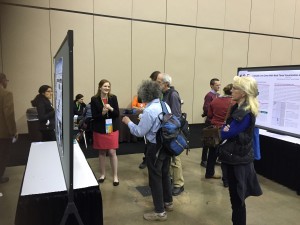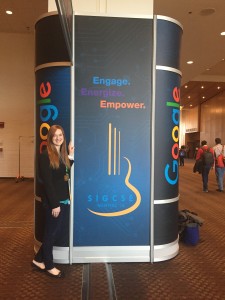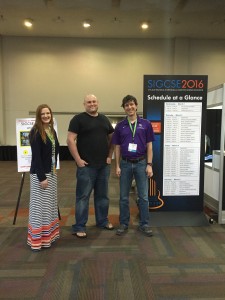
This month, Junior Computer Science major Kayla Holcomb presented her research at the Special Interest Group on Computer Science Education Symposium (SIGCSE) and won first place in the undergraduate research division.
What was your research about?
Over the last two years, I have been working with Dr. Pettit on automated assessment tools research. We have existing tools here in which students submit programs for feedback and grading purposes and are then given automatically-generated feedback and grades. For Dr. Pettit, this was part of his doctoral research. In our survey of the existing automated assessment tools, we found that the tools were lacking the ability to look at the process that a student takes from the beginning of an assessment to their final submission. Instead, most of the tools required the student to work on their own and turn it in after they have revised and edited it. We wanted to see step by step how the students go about solving a problem when they can’t get feedback from a tool. We wanted to find out how they solved it in sort of a testing environment. I built a simple auto-assessment tool that creates an environment where the student is working in the environment and we are taking snapshots of their works at different intervals. Then, we have this database full of all their work and time stamps and we can look back and see how they progressed. We can take it a step further and see when they first reached certain conceptual milestones. In other words, when was the first time that they achieved this step that we think is crucial to the assessment? We used that, plus the order in which the students organized themselves to work on the solution, to make certain assessments such as how well the student is understanding the concepts and how well the class understands the concepts.
 What did you enjoy about SIGCSE?
What did you enjoy about SIGCSE?
I had no idea what to expect going into the conference. There were computer science educators from all over the world. These were professors, some of which have multiple doctorates, who have more published papers than I can count. These were people whose work I have read and that are very well known in the computer science world. There were also people like me: students trying to learn as much from these professionals as possible to go forward in our own careers. It was really neat to see other people who shared the same interests as mine; other girls in computer science education that are focusing in research. I got to see what other schools were working on. I think I learned just as much from them as I did the professors.
One great thing about the conference was that my research was being seen by all of these industry professionals. They were coming up to me and having conversations with me about my research and how my research applied to their research. I was able to make connections that I would have never had the opportunity to make any other time. I met people who are looking for undergrad students to be in their masters programs and doctoral programs. At the same time, I got to see a lot of other research. I got to see a lot of presentations and go to fantastic workshops. This conference was something I don’t think a class could replicate. I was very excited for this opportunity and I would definitely do it again.


